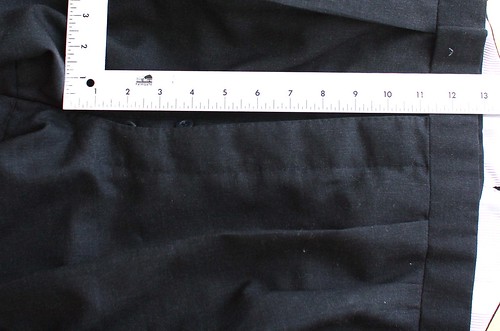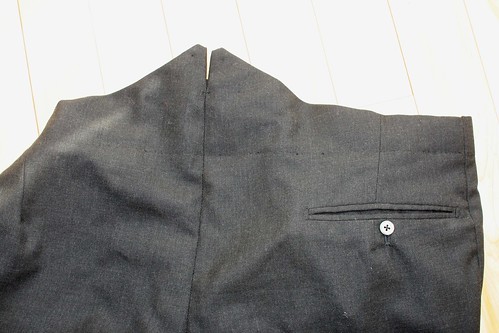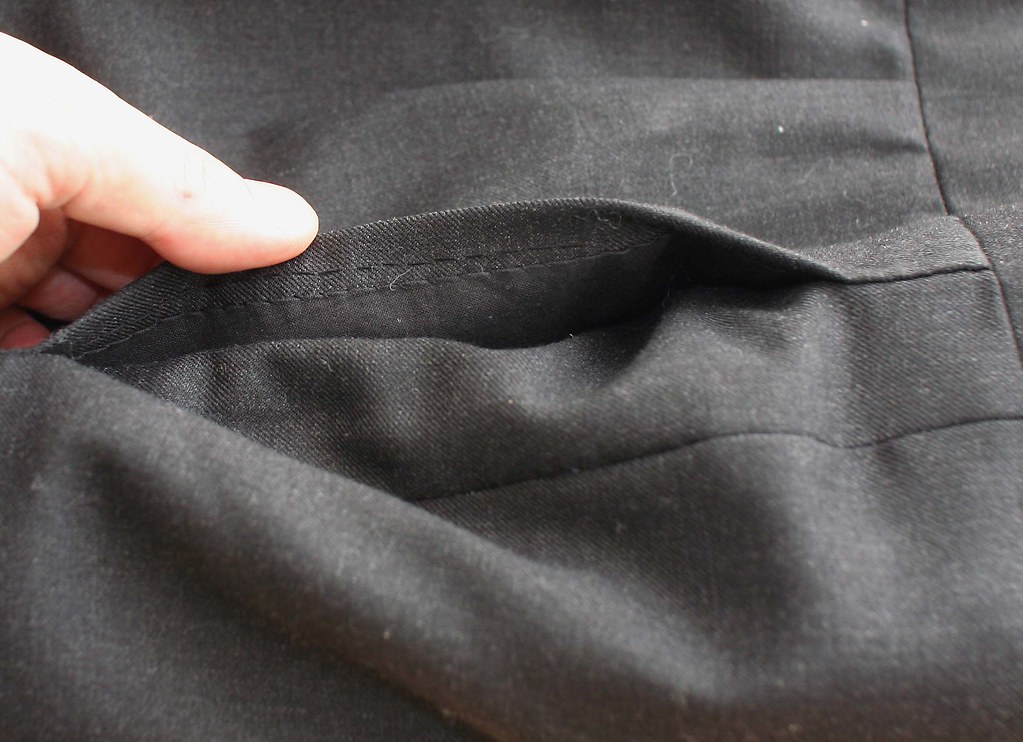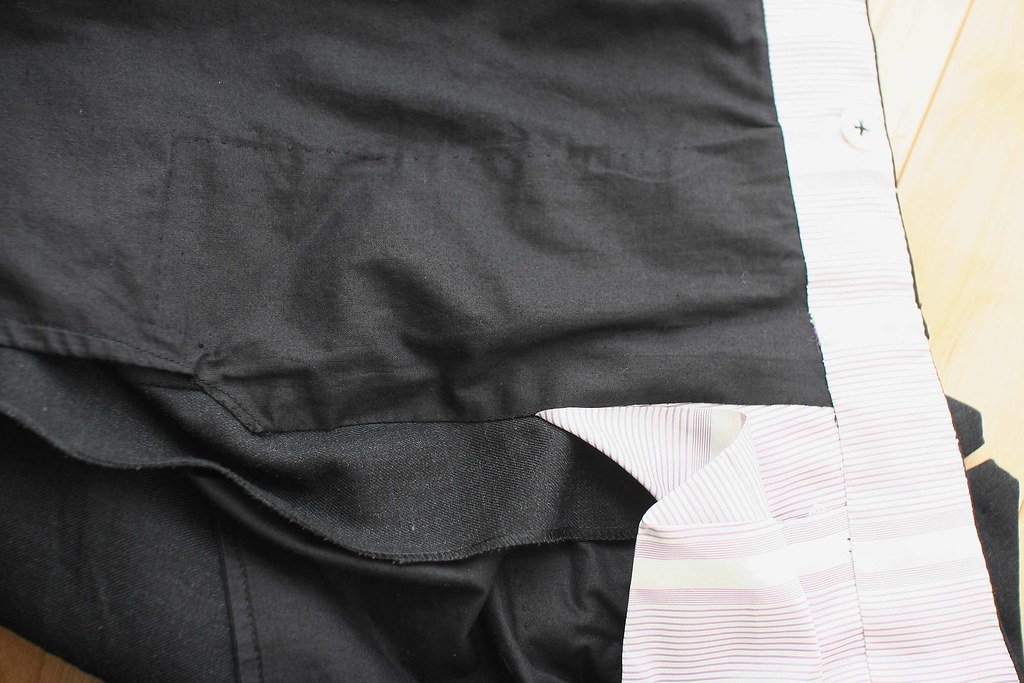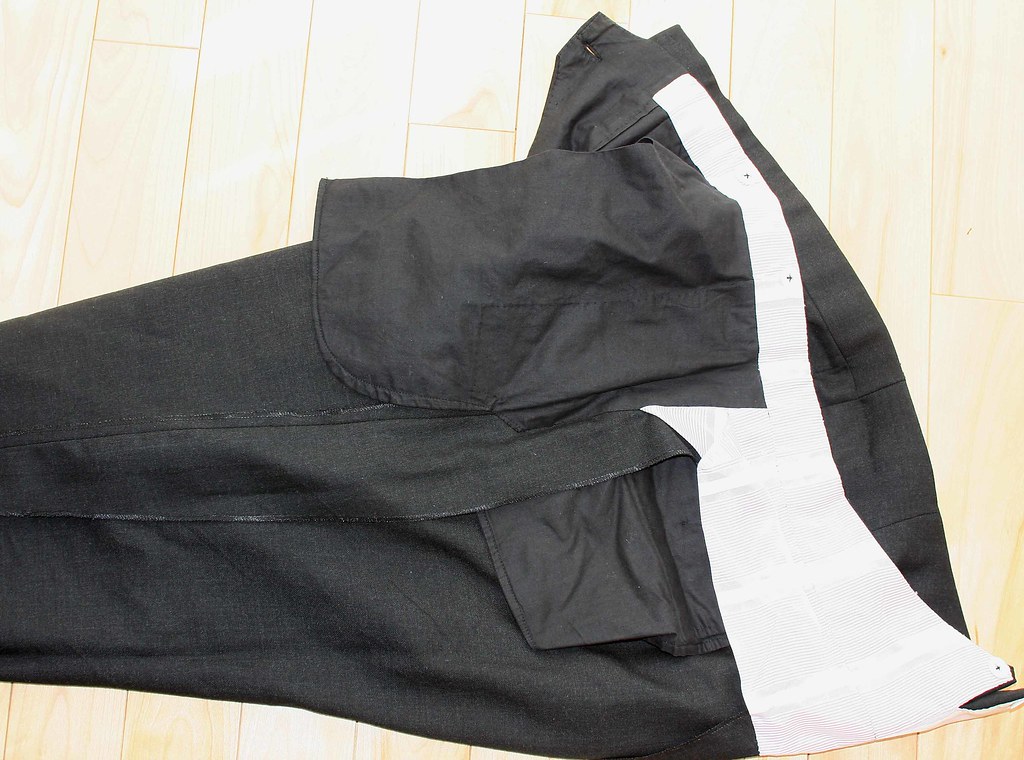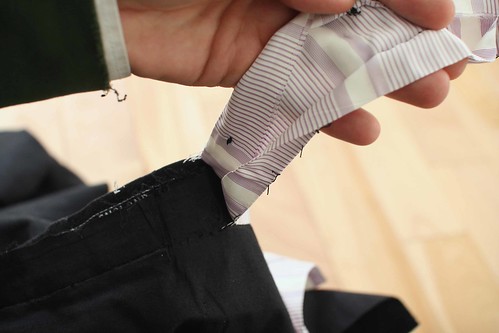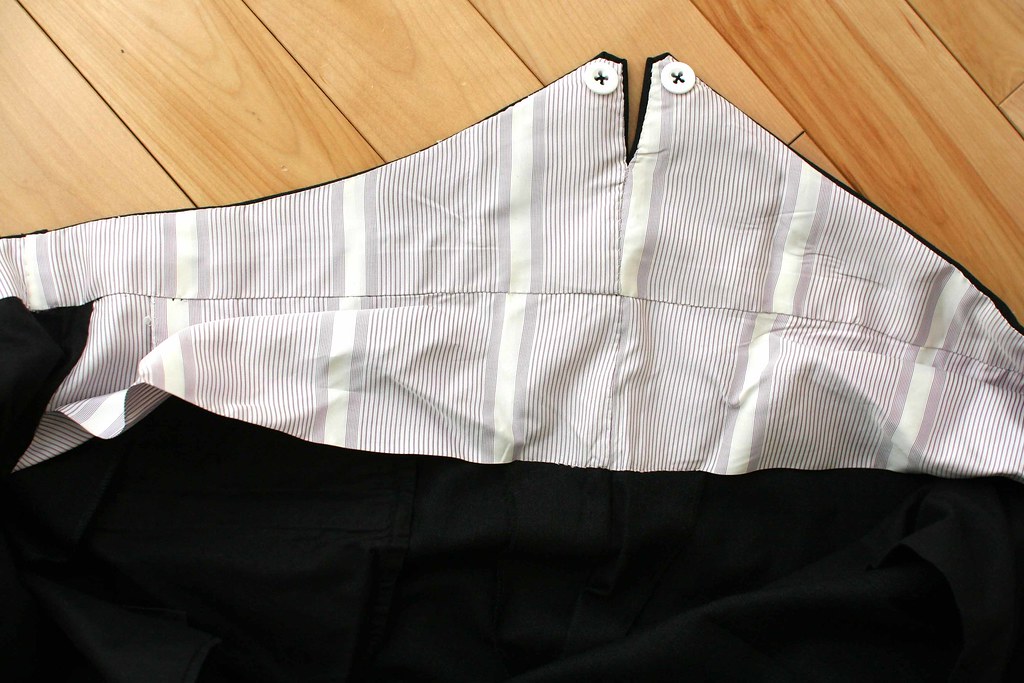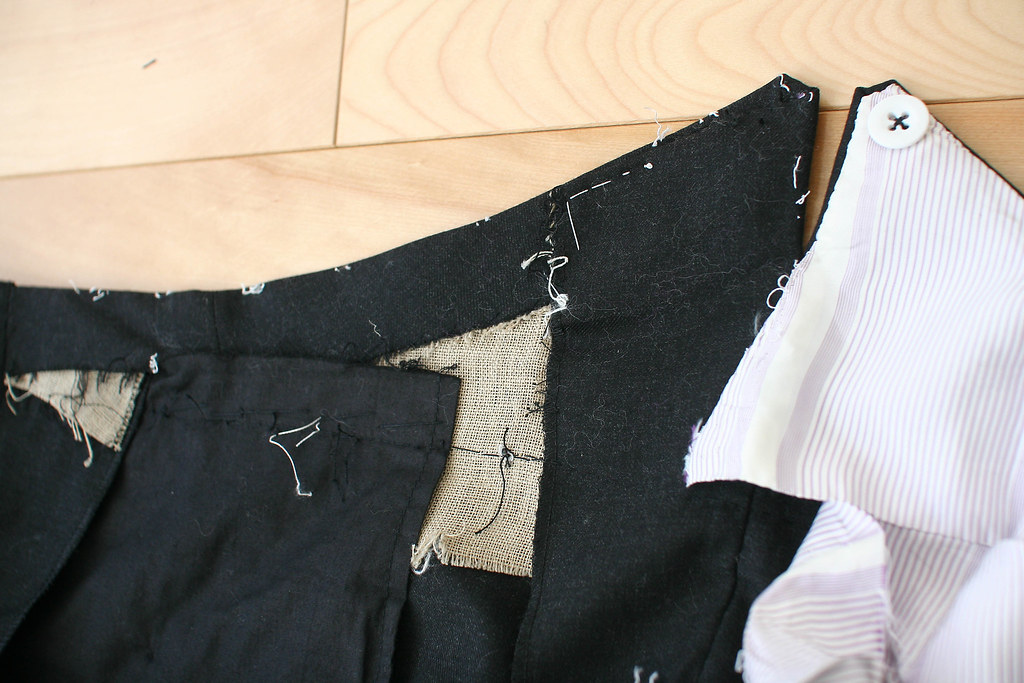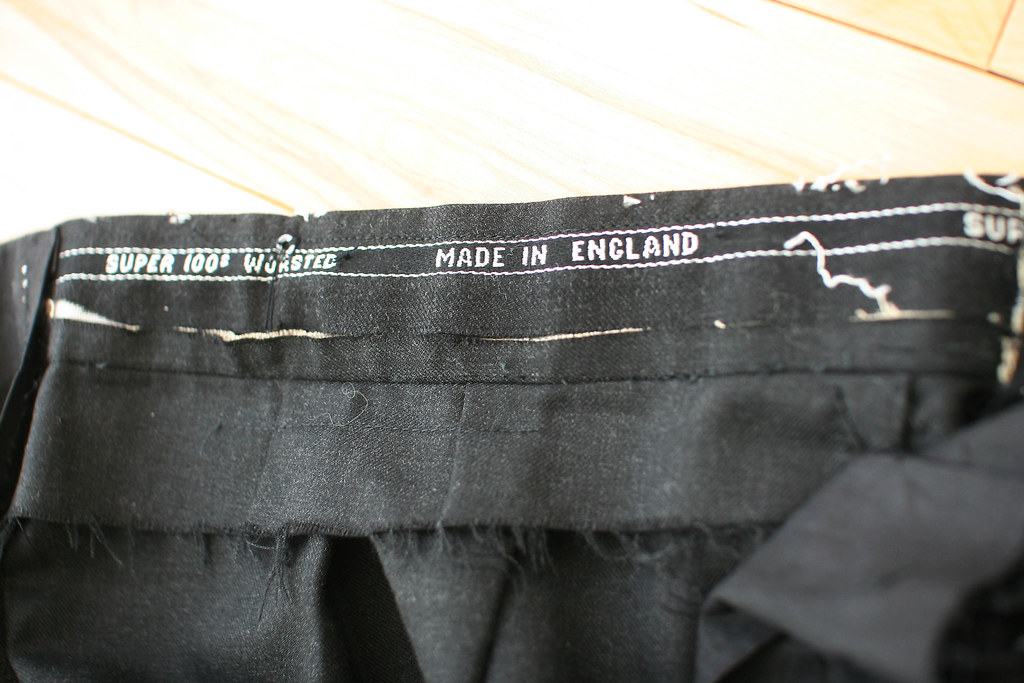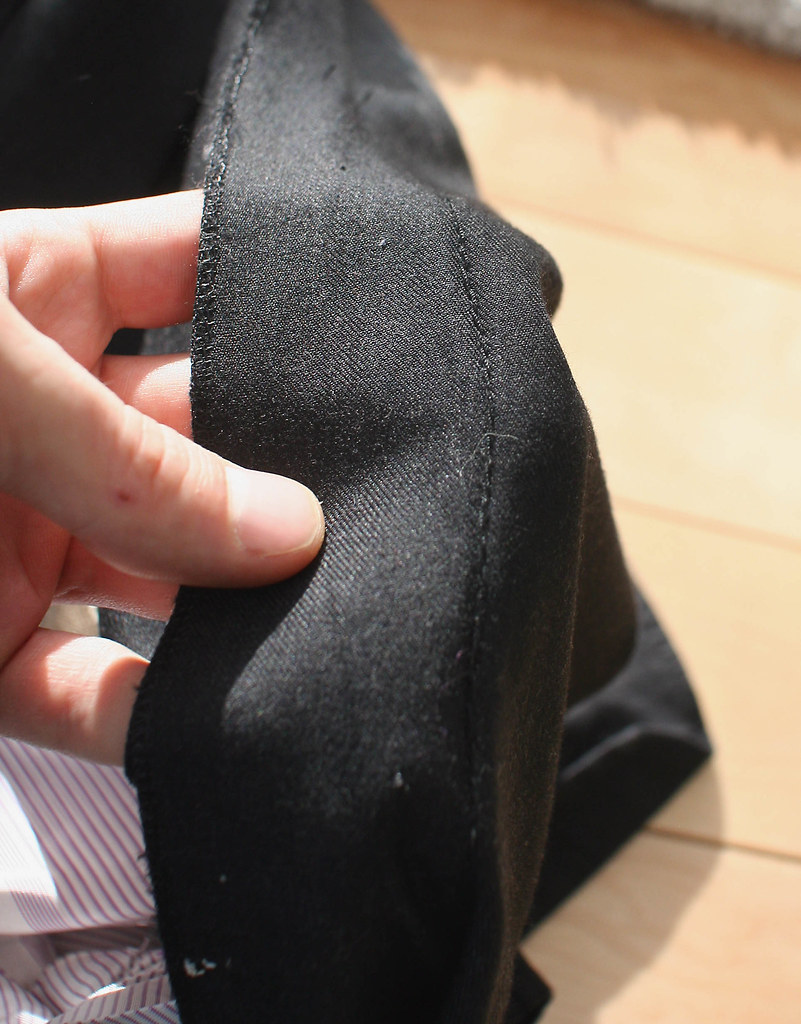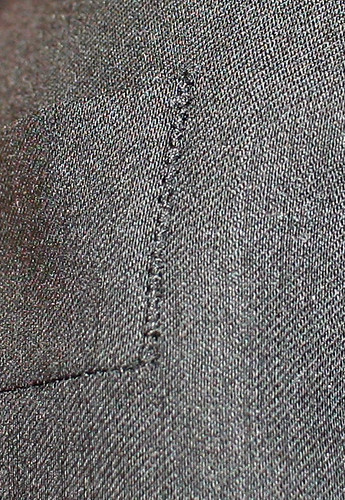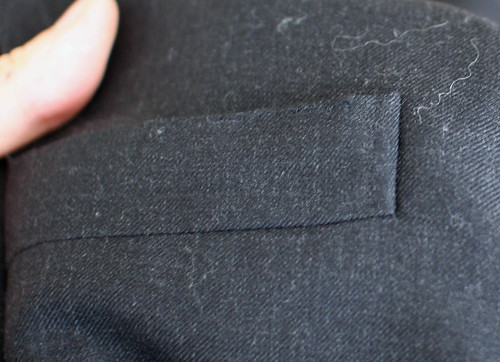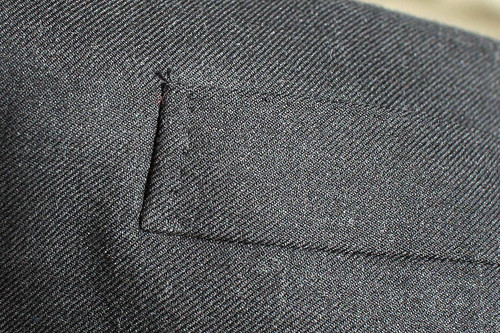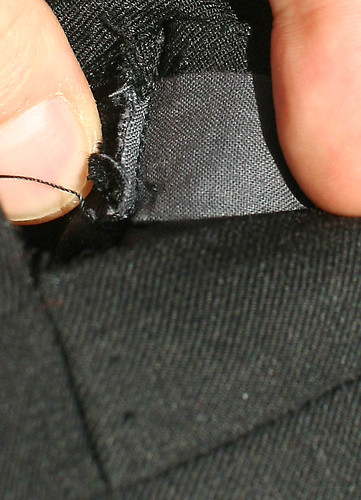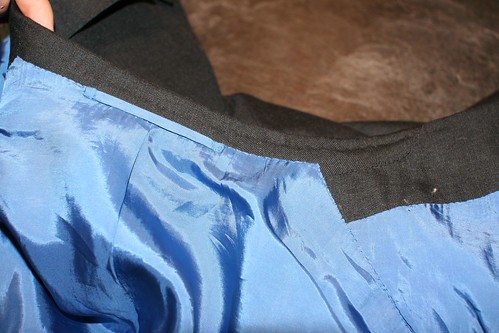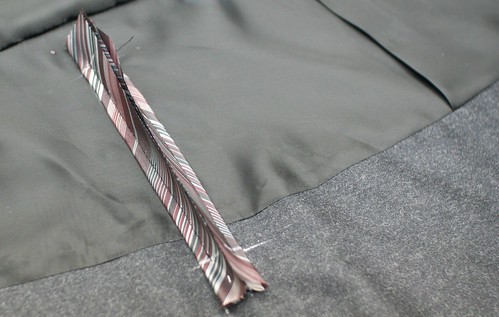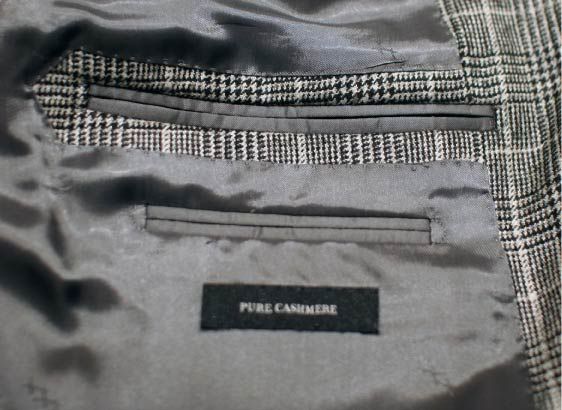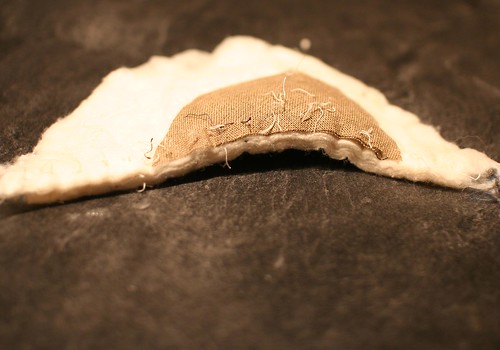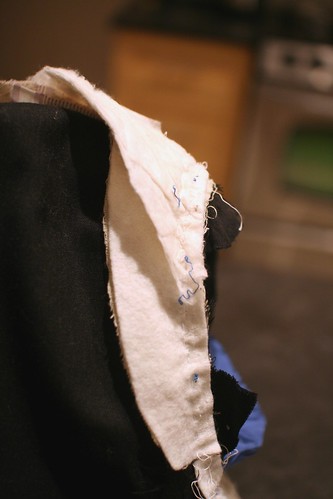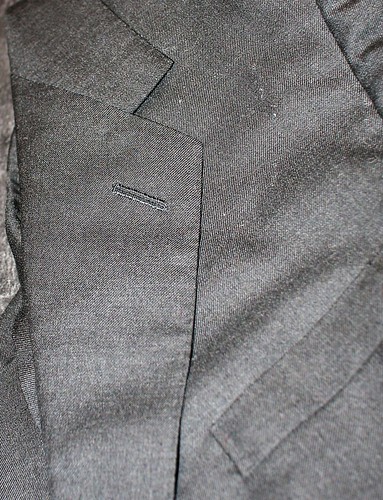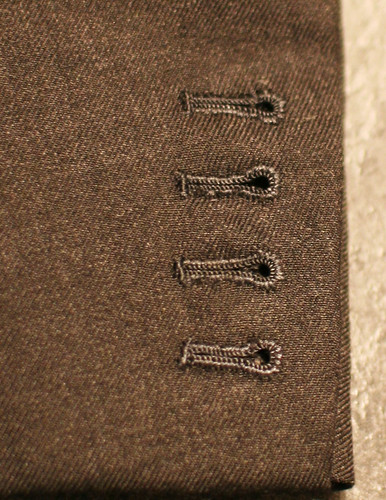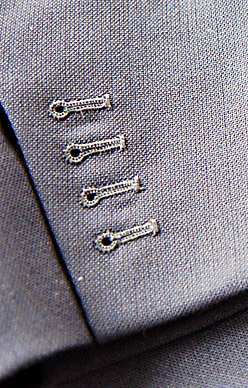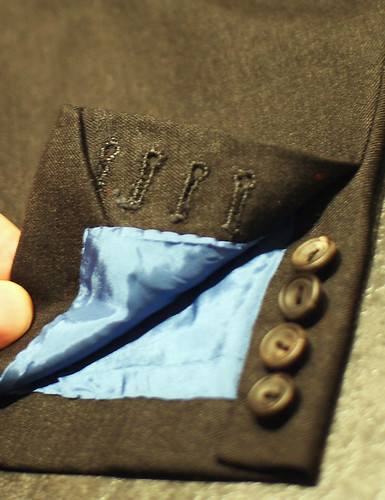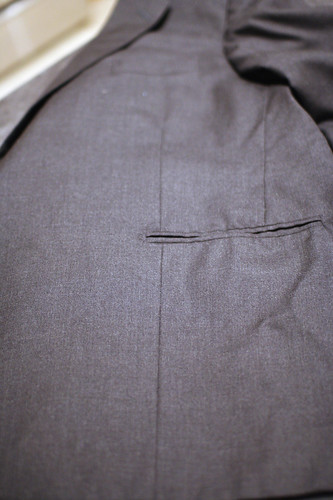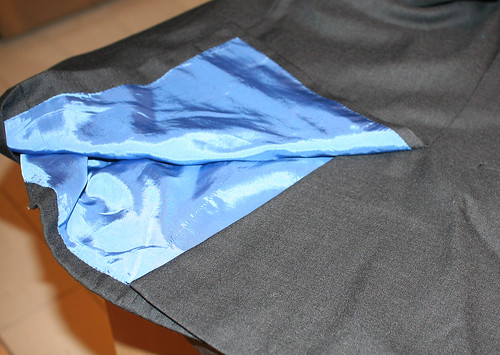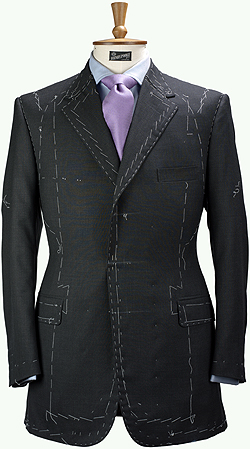
Reputed to be the founders of Savile Row as well as the creators of the tuxedo, Henry Poole has a long and proud history of tailoring. Their website has a good amount of information about them so I won't get into it much, except to say that they have also been known to be among the more flexible and progressive on the Row. They even had a female cutter as early as the sixties, IIRC.
My most recent purchase has two front buttons with hacking pockets, side vents, and the long front dart we have now seen on a number of garments, and no separate side panel.
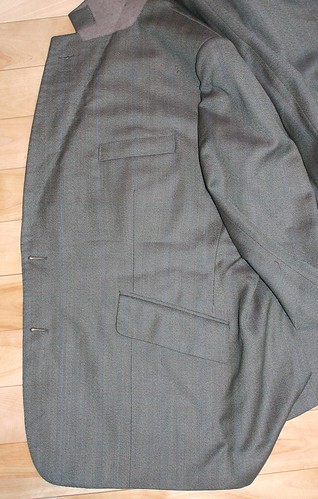
Sometimes these dissections can provide more questions than answers, and this garment is no exception. Because of their willingness to adapt to customer's wishes, to be innovative in the craft, and to not be too adherent to any particular "house style", it is difficult to make generalizations based on one garment. I suppose that can be said of all of them, but in this case in particular, I am stumped about a few things. More knowledgeable readers are encouraged to let us all know what we may be missing here.
To start, there is no label inside the pocket with a date or customer name on it. One instantly wonders if this may be ready to wear but I have found no information to the effect that they ever offered RTW; the garment has also clearly been fitted to somebody's shape and not a stock size, and alterations have been done by very skilled hands, likely ones that were involved with the initial construction of the coat.
The buttonholes are fairly neat, though it is quite obvious that only two of the four sleeve buttonholes function and two are shamholes.
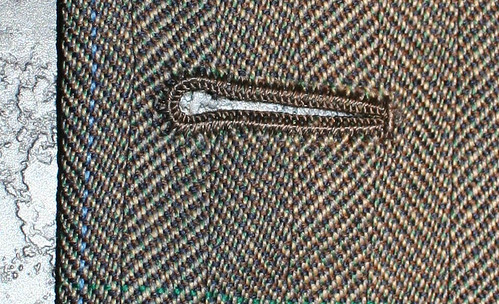

The inside pockets are neatly finished in what I now guess is the Row's manner of finishing. The hand felling is neatly done, if not quite as tightly spaced as the Huntsman.
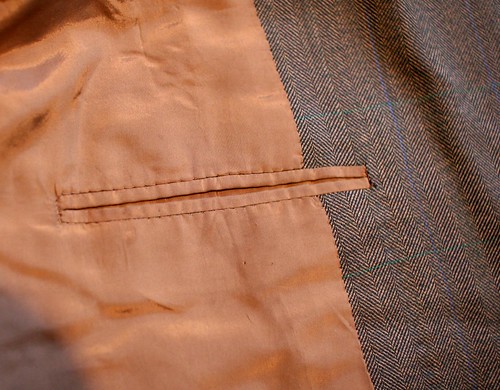
The hand felling is more obvious around the neck and shoulder.
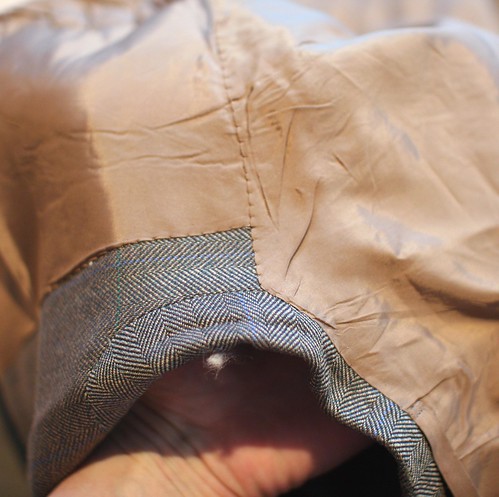
Another surprise, which is not so easy to see in the photo, is that the back was not cut so as to be able to match the collar. Notice the spacing of the blue lines on the back compared to the collar. We hear a lot about the importance of pattern matching, but this is not the first time that we see a back cut so as not to match the collar, and I recently saw a photo of a number of sleeves (from another Row maker) whose checks were off by a mile. I guess it's not as important as we have been led to believe.
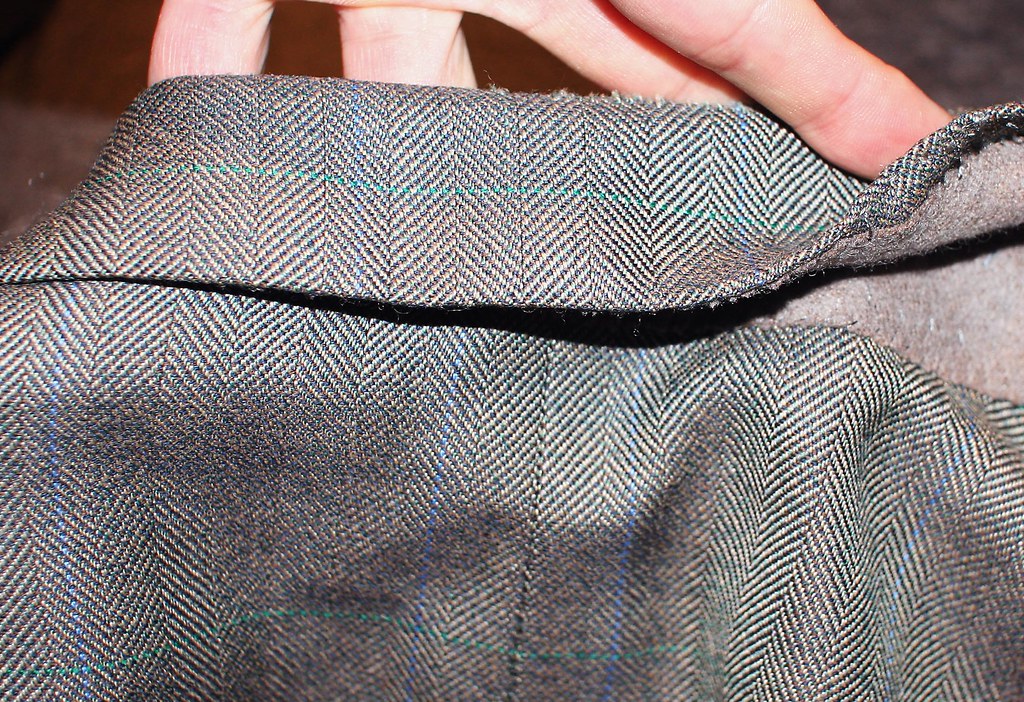
The front canvas is linen only, no hair, which is another surprise. I expected this from a soft A&S-type garment, but not from Poole. The chest feels fairly firm and the hand padding is also fairly dense so I'm not sure of the reasoning behind using linen and no hair. It's possible that the cloth is so bulky that the cutter felt that hair canvas was not necessary for the front. The roll of the lapel would not be as rich, but again, that is a personal preference that they may not share.

Let's look again at the canvas, only closer.

The lapel and the collar have been padded by machine.
Wow.
I've explained my feelings about hand padding the collar before, namely that I don't feel that it's necessary, but I do prefer a hand-padded lapel. I've been told that Gieves has padded their lapels by machines for a long time now; I'm wondering if this is normal for Poole or was done especially for this garment for some reason. In their forward-thinking they may have determined that the slight added benefit of hand padding may be offset by using bulky cloth and linen canvas and that there is not enough benefit to merit the significant cost. Mere speculation on my part. I really don't know.
Ripping away the felt which covers the haircloth in the chest, we find a large piece of haircloth with a linen support piece in the scye and another haircloth support piece in the shoulder. So this coat is actually ever-so-slightly more structured than the Huntsman, which is supposed to be firmer. Fascinating.

The shoulder vees in the canvas have been stitched down with canvas, the way I would expect them to be (the Huntsman vees were left free, for reasons I have yet to figure out)
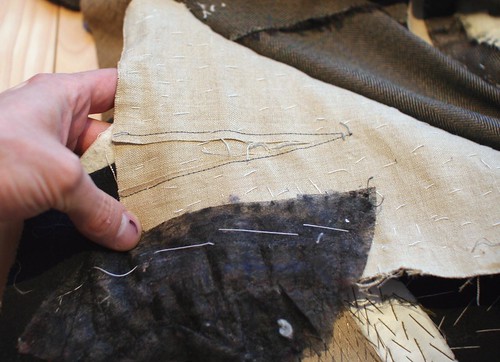
There is a fairly minimal amount of wadding in the shoulder but also a piece of pukh (for want of an english word)
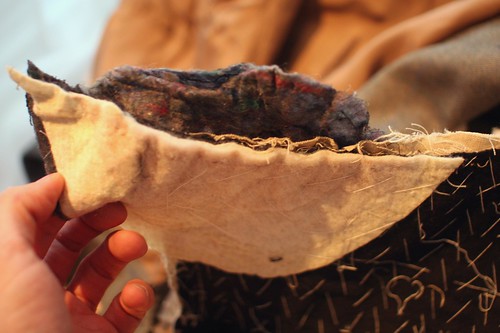
Here is the pad once it has been removed
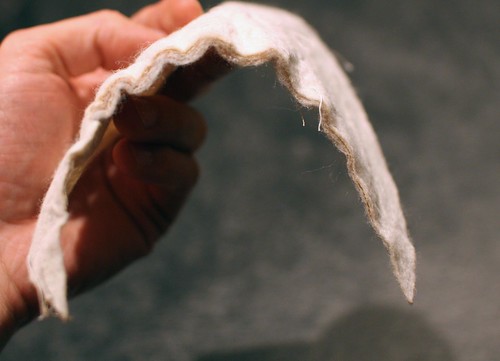
The sleeve head is the "on roll" type, which I don't like for reasons which are obvious here. They tend to disintegrate and get lumpy over time, whereas a shaped sleeve head conforms better to the shoulder and won't fall apart like this. On a sport coat it's not really an issue, but on fine worsteds it looks bad.
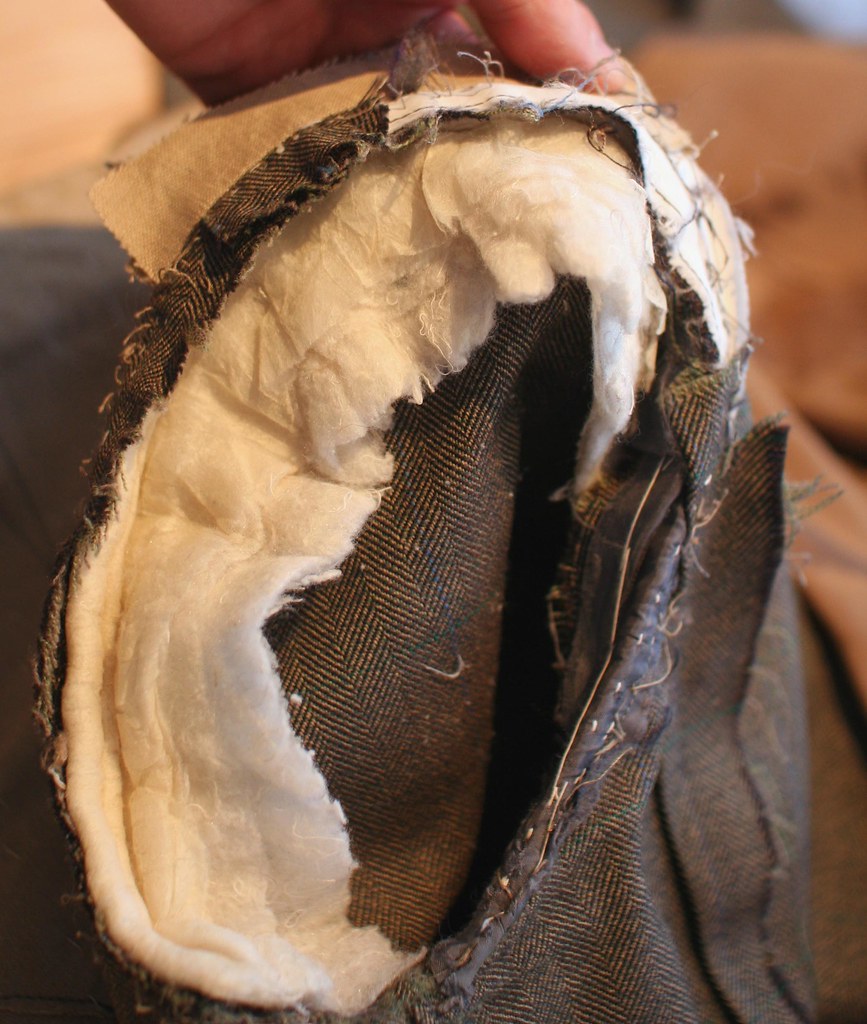
Which brings me to the greatest surprise of all. For me.
IN the photo of the sleeve wadding, you can see there is a piece of gray lining around the bottom of the armhole. Looking closely, we see that the sleeve has been set by machine. Many houses insist this seam and the shoulder seam must be done by hand to allow for flexibility and to be able to fit the fullness of the sleeve in, but not only has this been done by machine, the initial thought of "cost saving measure?" is instantly dashed by the fact that the lining sewn onto the armhole is straight cut. This prompts a look at the shoulder seam.

Not only is it also done by machine, but there is also a straight-cut piece of lining staying the seam.
What does this mean?
It means that the tailor at Henry Poole not only disagrees with the idea that the scye and shoulder seams should stretch, he has inserted a straight-cut stay to PREVENT the seams giving any.
WOW. Double WOW. This is potential bespoke heresy. But is there anything to it?
I'm now, more than ever, tempted to take a trip over to London to have a series of chats with people, especially now that I would like to understand the tailor's reasoning behind this complete about-face from tradition.
In the meantime, however, a series of experiments testing the validity of the theory of elasticity in these seams are in order. Maybe Poole has already quietly done their testing. I will also measure the size of the sleeve compared to the armhole and the amount of fullness they have worked in to test the theory of the necessity of hand-sewing the fullness.
And since Santa Claus brought me a camcorder for Christmas it will be that much easier to illustrate the results. Thanks, Santa.
UPDATE
A few interesting suggestions have been made.
I don't think that this garment was a licensed garment for several reasons; first, I acquired it from a vendor in London, not the far east where the licenses are held, but more importantly, I believe the label of licensed product reads Henry Poole of Savile Row wheres this garment bears the full Henry Poole and Co. 15 Savile Row etc. This is also an indication that the garment was made after 1982 when they moved form their premises on Cork to their current address. The garment, in almost all respects, has all of the hallmarks of a London-made suit. It is also of a size which would surprise me to see sold in Asia.
I think the most likely answer is that this was a made-to-measure garment rather than full bespoke. The cost of such garments, being lower than bespoke, could explain the machine padding, even though, as I am told, Gieves and Hawkes has been doing their bespoke in this way for years. It could also explain the lack of a customer label. I might contact Poole for comment, though their reluctance to do so would be understandable, in which case I will have to try to put my hands on a garment which we know to be bespoke, for comparison. Perhaps one of Mark's friends have worn out one of theirs and would be willing to let it go for a small price?
I should also add that I have never heard anything other than the highest praise for Poole, which can not be said of all the houses.
ANOTHER UPDATE
There was a coat on ebay, made in 2007, cut by Simon Cundey himself, which would have made a perfect comparison garment but I was outdone in a last-minute bidding frenzy. To whomever outbid me I say "grrrr". But I will keep trying. And Kiton is definitely next on my list, particularly since they made some pretty dubious claims in print recently. We shall see about that.....
A FINAL UPDATE-
I am led to believe that management at Poole's was unaware that the padding was being done by machine and have since insisted that all lapels and collars be padded by hand.


